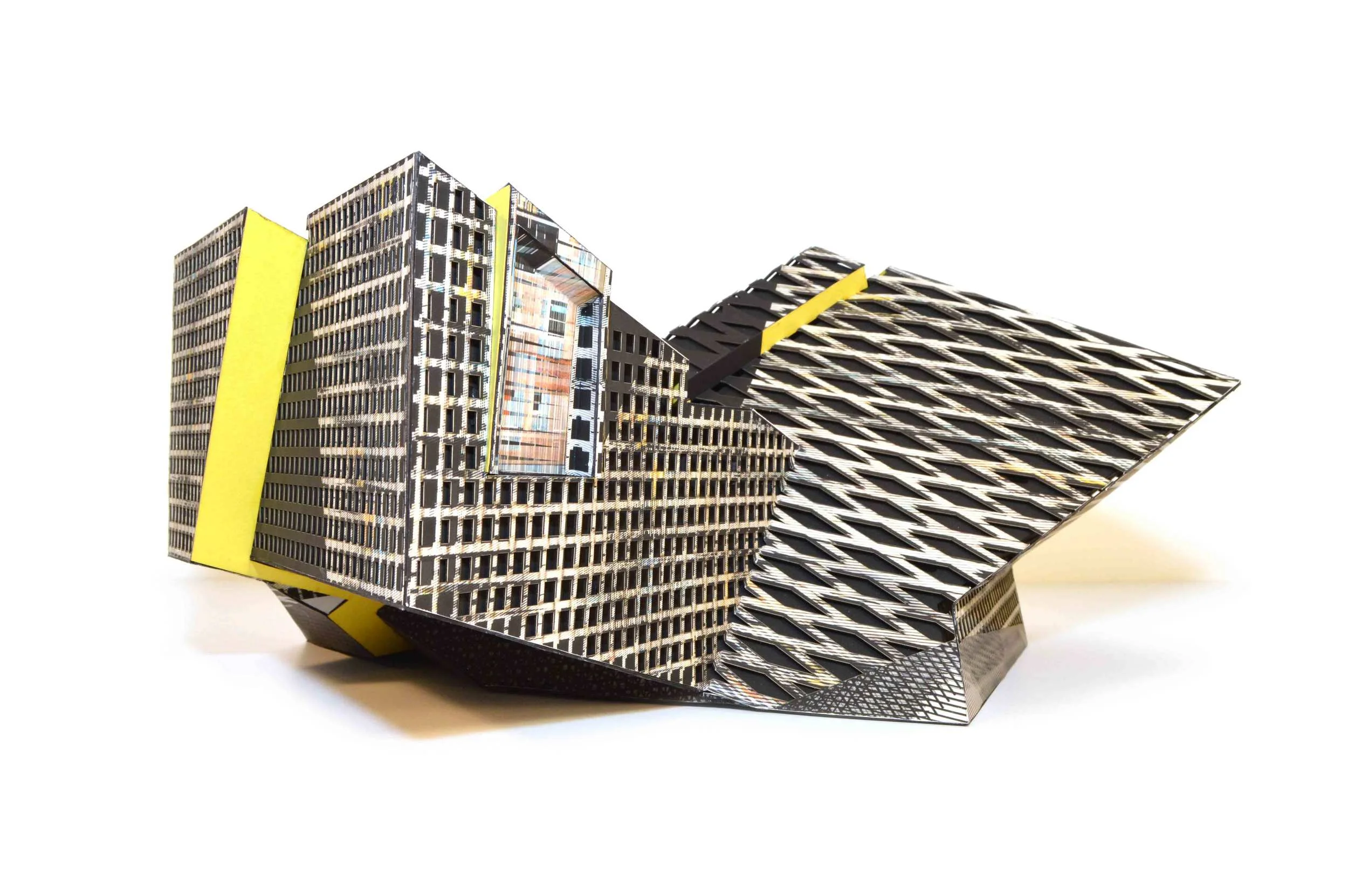Advisor: Elena Manferdini
The following project was following the guidelines for the 2014 World Health Organization Competition. The brief called for an expansion of the facilities by an additional 25,000 square meters. The current building on the site was designed by Jean Tschumi, measuring roughly the same dimensions as the expansion.
The project’s aim is to challenge the envelope through the use of the graphic to inform and misinform, to bring clarity and disparity, to align and misalign via the super-graphic and super-real textures applied to the envelope. The super-graphic belongs to the conditions introduced by my new WHO building – hence being artificial and not belonging to the environment. The roof datum and the interior environment that the new WHO building introduces belong to the realm of the super-graphic (the roof and interior graphics can be seen in the photographs of the models below). The artificiality is affirmed by being generated entirely through digital techniques. To contrast the super-graphic, the super-real belongs to the world of the exterior – connecting the building to the environment and having a “dirty” sensibility. To affirm this, the super-real samples a series of photographs that begin to weave together to make the texture. To maintain a dialogue between the graphic and the real, the same repetitive square pattern is used. This repetition of geometry is also drawing a link to the existing Jean Tschumi building that has a very systematic and regular patterning – something Zaera Polo discusses in the Politics of the Envelope as having egalitarian attributes. It is through this dichotomy of real versus artificial that the use of image begins to depict the responsibility of the World Health Organization – to help purify the exterior environment as the pattern passes through the building into a sterile environment. The super-graphic is also stripped of color, becoming greyscale upon entry to the building – further reinforcing this idea of purification.



























